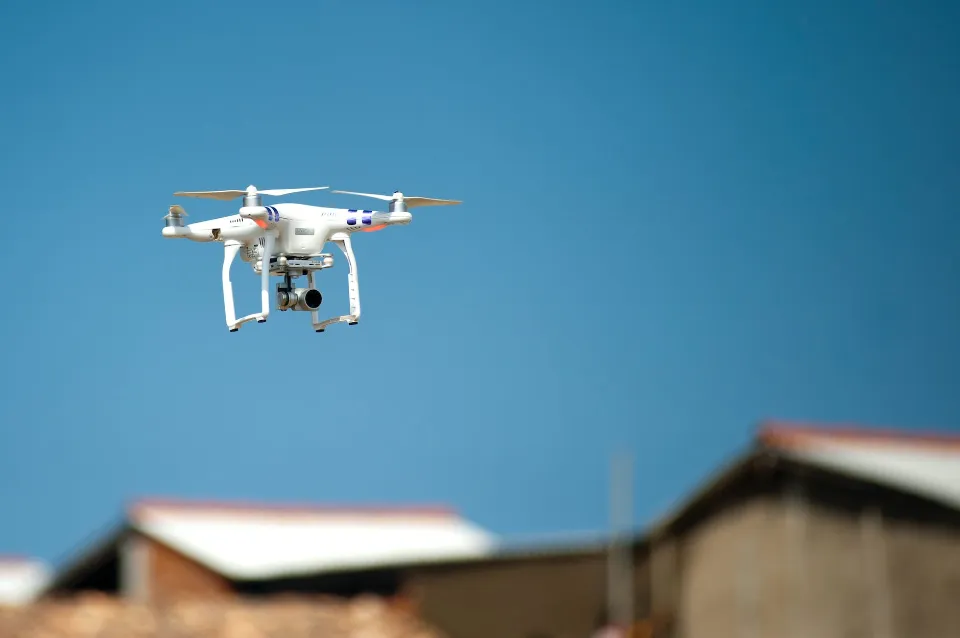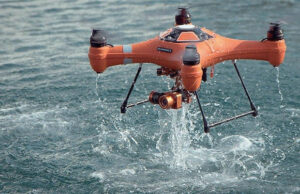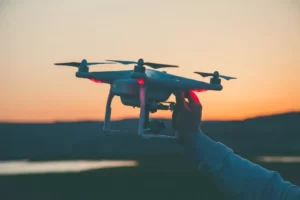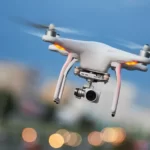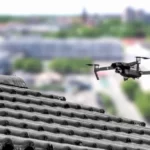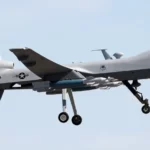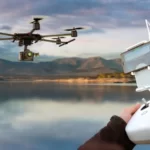What common flying machine is used by children, hobbyists, businesses, and the military, and can range in size from a few inches to the size of an airplane? We have listed 14 different types of drones in this guide to help you learn more about drone industry.
Even though drones require similar parts to function, they all differ in some way in terms of their capabilities or material composition. Most drones are designed to perform particular tasks, and as a result, they are constructed in a particular way to suit the environment in which they will be used.
So, let’s explore what the vast world of drones has to offer. The list includes both types of consumer drones as well as a variety of American military drones. Military.
Table of Contents
14 Different Types of Drones
1. Single-Rotor Drones
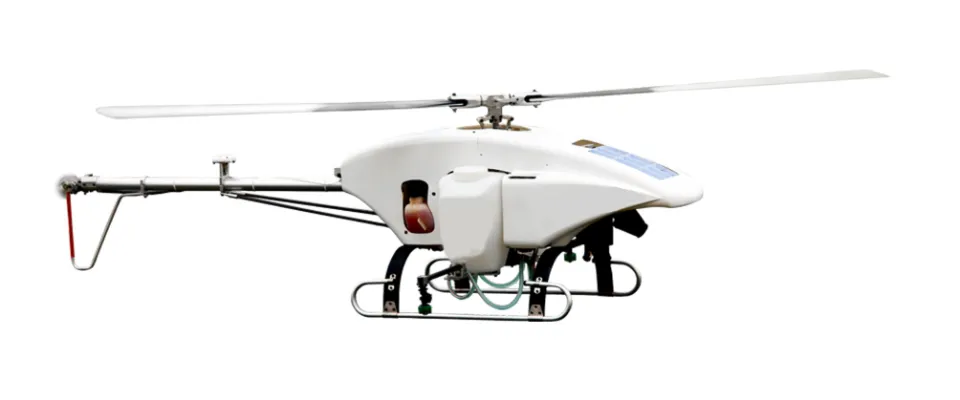
These are a few of the drones that are the most fundamental. As its name suggests, it uses just one rotor (aside from the tail unit in some cases) and can frequently produce thrust more effectively than its multi-rotor competitors. They may be the best choice for flights that last longer.
However, there are problems with that design. First off, because they frequently use gas power and have a single blade, single-rotor drones can occasionally cost more than their multirotor counterparts. Additionally, bigger rotor blades increase your risk of being hurt by one by accident.
Additionally, the drones are frequently less stable and, although they can still hover over an area, they can also be trickier to fly than drones with multiple rotors to keep them balanced and aloft. They may cost as little as $25K or as much as $300K.
2. Fixed-Wing Drones
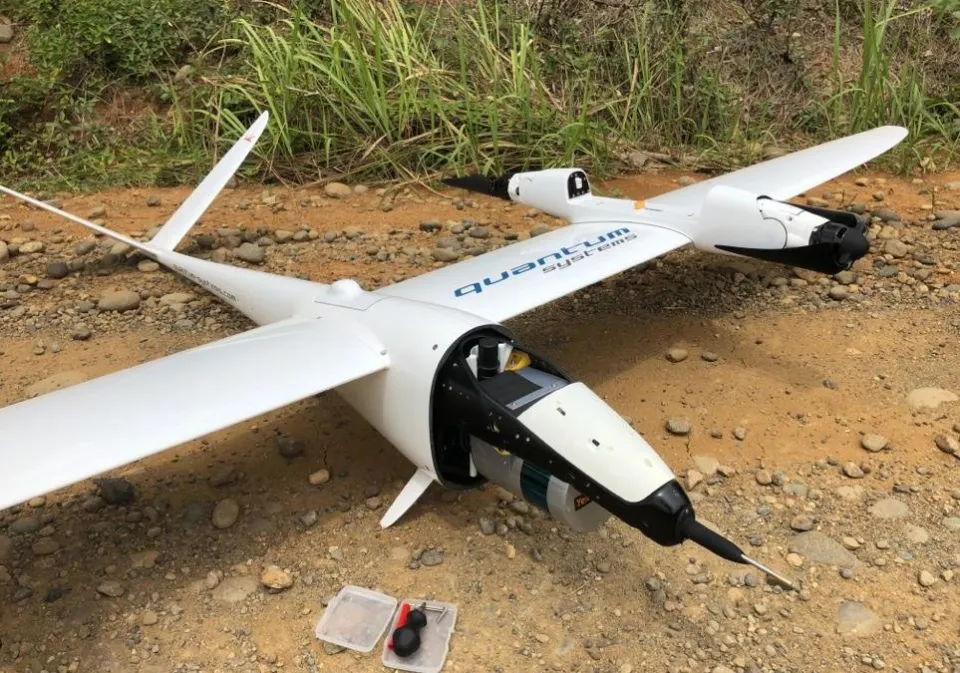
These drones resemble controllable airplanes more than other drones with helicopter-like designs because they don’t have rotors and have fixed wings. They don’t need rotors to provide vertical lift; instead, their wings do so, which makes them perfect long-range drones because they only need enough power to keep moving forward.
Gas can be used to power some fixed-wing drones. A fixed-wing drone can fly continuously for up to 16 hours, unlike multi-rotor aircraft which cannot. They cannot hover, however, like drones with helicopter-style rotors can.
They are also more challenging to land due to the lack of a rotor. They must be very carefully brought in for an extremely soft “belly landing,” and in less-than-expert hands, this can go very wrong very quickly. The typical price range for these drones is $25K to $120K.
3. Fixed-Wing Hybrid Drones
In order to create drones with both rotors and fixed wings, this type of drone tries to combine the best features of both rotor- and fixed-wing designs. The ends of the fixed wings of a fixed-wing hybrid drone typically have a few rotors attached to them.
Actually, many of these drones are based on aircraft designs that date back to the 1950s and 1960s. Before the invention of drones, they were largely abandoned because the technology required to make them a reality was deemed to be too complex.
These products are much less readily available on the market than their single-rotor, multi-rotor, and fixed-wing counterparts because they are still quite experimental. They may, however, become the trend in the future as several companies are working on them.
4. Multi-Rotor Drones
Whereas a single-rotor drone resembles a helicopter and can fly using just one rotor, these devices have multiple rotors strategically placed throughout the craft. The craft may find it simpler to maintain its balance and continue hovering with these extra rotors.
The more rotors you add, however, the shorter the time the craft can stay in the air, regardless of the different types of commercial drones. As a result, even though these devices provide good stability, their maximum flight time is frequently 30 minutes.
Additionally, the majority of multi-rotor drone types cannot transport a heavy payload because doing so would throw off the balance that is maintained by the rotors that are offset from it. From $5k for entry-level units to $65k for top options, the cost varies greatly.
5. Small Drones
These typically only cost up to $100, as opposed to the first four drone types listed here, all of which can easily cost tens or even hundreds of thousands of dollars. “Small” in this context typically means between 20 and 80 inches long.
These drones are strictly for recreational use, and they typically are unable to carry out many of the commercial tasks that some of those other models are equipped to do. For instance, when mounted properly, cameras onboard highly stable multi-rotor aircraft can record breathtaking aerial images and videos.
Small drones, on the other hand, are typically too light and lack the stability needed for the picture-perfect balance needed for accurate photography. Nevertheless, for kids and hobbyists, these choices can be a fantastic, low-cost introduction to the world of drones.
6. Tactical Drones
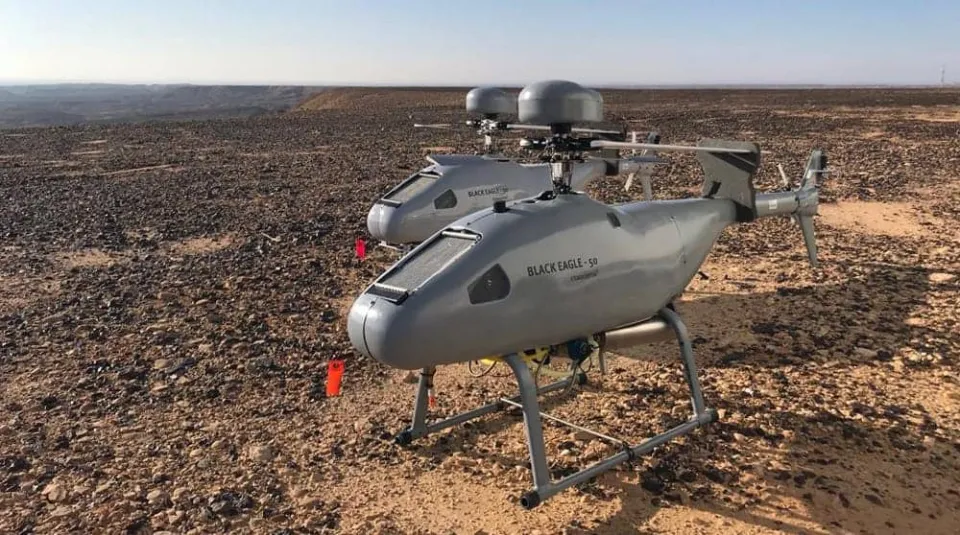
These drones are much smaller than the kinds used for general combat and more difficult tasks, but they are still big enough to not be pocket-sized. The Raven, which has a length of 4.5 feet and a weight of 4.2 pounds, is the US military’s preferred tactical drone.
These drones are frequently employed in surveillance operations. Similar to the Black Hornets, the Ravens can be equipped with specialized infrared cameras that enable them to give soldiers an accurate view of the area even at night.
The devices have GPS technology built in. Although they lack many bells and whistles and are rather basic, this also makes them quite accessible and simple for soldiers to use without the need for specialized training.
7. Target and Decoy Drones
One of the most crucial things to remember about military drones is that, depending on the circumstance, they can perform a variety of tasks. For instance, some drones, while having the ability to carry out strikes, can also be used for surveillance. These drones act as a decoy.
However, depending on the specifics of each mission, the appearance of those decoy missions is certain to vary. These military drones must therefore be prepared to play a variety of decoy roles.
Some target and decoy drones, for instance, can accomplish their task by imitating an approaching missile. This can draw fire from ground anti-aircraft units, disengaging them from any actual combat drones or approaching missiles.
8. Racing Drones
One of these popular types of drones that are good for hobbyists has an engine, so it’s likely that someday people will want to race them.
Racing drones have top speeds of 60 mph. Nevertheless, because so much of their energy is focused on a single task, they frequently don’t have as long of a flight time as their rivals.
9. Reconnaissance Drones
We once more increase in size to drones that are not intended to be handheld with another military drone class. Instead, these 16-foot-long drones are known as Medium Altitude Long Endurance (MALE) or High Altitude Long Endurance (HALE) drones and are launched from the ground.
These drones are some of the most frequently used by militaries worldwide. This kind of drone has been produced by The Heron, an Israeli aerospace company, for use in military reconnaissance by the United States, Canada, Turkey, India, Morocco, and Australia.
The aforementioned drones have a weight capacity of over 2200 lbs and are capable of cruising at a height of 35,000 ft for 52 nonstop hours. Another type of drone used by the German military is the LUNA, which has a shorter operational lifespan than the Heron but is less expensive.
10. Large Combat Drones
Chances are when you think of “drones” in a military sense, these are the types you imagine. Predator and Reaper variants, both used by the US, are about 36 feet long and have the ability to attack targets with laser-guided bombs and air-to-surface missiles.
These devices have a 14-hour runtime and a 1,000-mile range. These drones have been employed in missions like military operations against Pakistan and other nations with which the US is not officially at war.
Even though the US may be the most well-known (or notorious) user of drones, they are by no means the only ones. They are also utilized by other NATO members like the UK, Spain, and France, and China has produced its own version, the CH-4, which Egypt and Iraq have purchased.
11. Non-Combat Large Drones
Large drones, on the other hand, are not designed for use in battle. These are used for larger-scale recon missions than their diminutive Black Hornet and Raven counterparts and are capable of performing a variety of tasks, including reconnaissance.
For instance, Northrop Grumman’s Global Hawk is primarily used to observe combat areas but is not designed for use in actual combat. Instead, it is employed for surveillance, such as the call-scanning of mobile phones.
This does not imply that these drones are cheap just because they do not participate in combat. Without ground infrastructure, the cost of the Global Hawk, for instance, can reach $131 million.
12. Micro Drones
While consumers may view smaller drones as toys, militaries that employ drones treat micro drones like business. The Black Hornet, a drone created for the British military, is the most well-known example of this type currently in use.
Since their adoption in 2013, these tiny 1″ x 4″ drones have been used by the Afghan installations and surrounding walls will be inspected by the British military. Cameras might be too much for small drones used for recreation, but the specialized microcameras on these small drones can gather valuable information.
Black Hornets can be kept in a specific belt when not in use. They have a range of up to a mile and can fly for up to 25 minutes on a single battery charge. Some Black Hornets have also been given infrared camera attachments.
13. GPS Drones
Let’s wrap up by taking a closer look at a few specialty drone types, starting with those created with GPS functionality in mind. We’ve now examined the main types of drones for the commercial market as well as military use.
Through the use of a GPS connection, these drones communicate with satellites. The rest of their flight can then be plotted out using this, giving you access to data that you can use on your own.
For mapping out large topographies, for instance, this can be very effective.
Naturally, this uses a lot of battery life. As a result, the best GPS drones have software that instructs them to return to their starting location once their batteries start to run low or when they are no longer within their operational range.
14. Photography Drones
We’ve already discussed how drones can take pictures. If you want to take professional photos, you should use a commercial drone that is made specifically for that purpose. A few smaller options can take a small number of photos, and there are undoubtedly many drones that can do so for militaries.
You’ll want a drone with multiple rotors, as mentioned above, to get the stability required for taking good photos or videos.
Make sure your drone is equipped with a professional-grade camera if you want to capture images of the highest caliber. Drones with 4K cameras can capture photos in high definition. For taking pictures over large areas, some photography drones also use automated flight modes and precision stability.
Who Uses Drones?
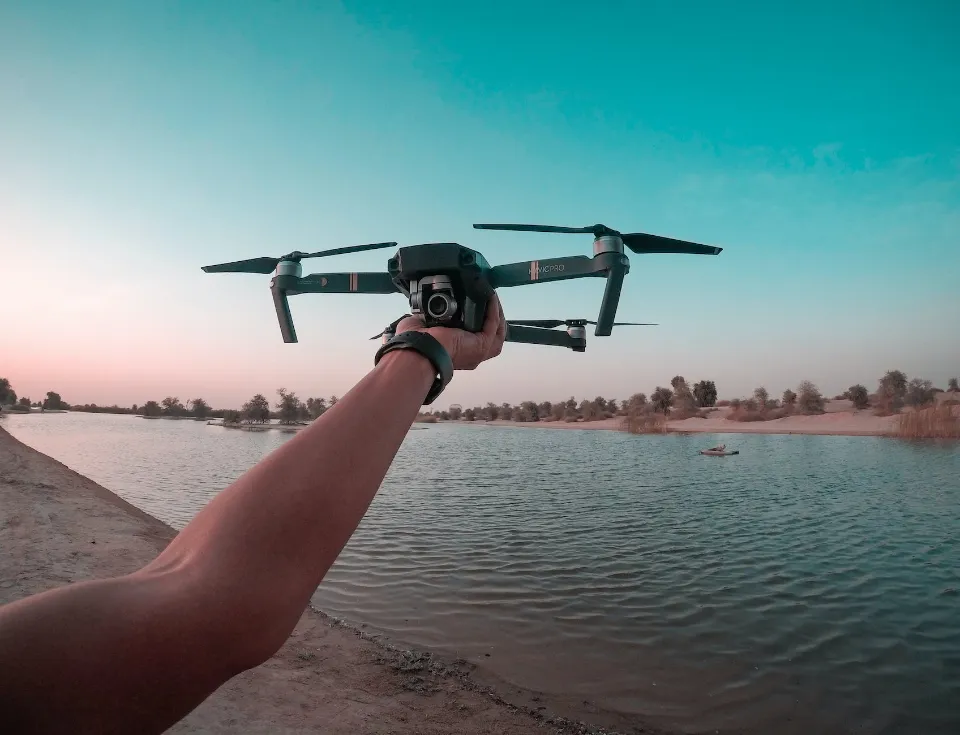
To learn about the types of drones on the market, you first need to understand the composition of the drone core market:
- Enthusiasts
- Commercial
- Institutional
- Military
Enthusiasts
All those who are passionate about drones and use them for entertainment are considered drone enthusiasts, also known as hobbyists or recreational pilots.
In 2021, $2.34 billion is projected to be the size of this market.
We have a comprehensive post on consumer drones if you’d like to learn more!
Commercial
Business-to-consumer (B2C) drone users include independent contractors, filmmakers, real estate agents, and maintenance and construction companies.
Institutional
Governments, large corporations, academic institutions, and other powerful organizations that can use drones in their business plans can all be considered institutions.
The Airbus Zephyr can be outfitted with cell phone tower hardware, effectively transforming it into 250 cell towers.
Military
Armed drones can offer intelligence, security, and combat alternatives to sending in troops.
Related Post: How Much Does a Military Drone Cost?
Conclusion on Different Types of Drones
Different types of drones have been around since as early as 1917. Drone operations are now much more common in the business sector, despite their initial primary use in military operations.
We sincerely hope you comprehended the various drone types and picked up some new knowledge!
Read More:
